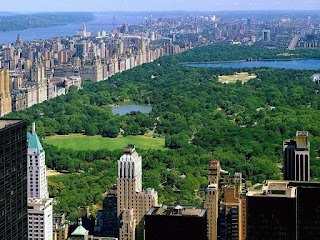5.07.2008
Chapter 11: The Urban Development Process
Chapter 10: The City as Text: Architecture and Urban Design
Chapter 10: The City as Text: Architecture and Urban Design


5.06.2008
Chapter 5: The Foundations of Urban Form and Land Use
Chapter 8: Urban Form and Land Use in the Less Developed Countries
Chapter 8: Urban Form and Land Use in the Less Developed Countries
Today’s cities still show how they were planned back in colonial days, typically with the wealthy closest to the central plaza, and then further from the center are the lower and middle class residents. The cities that had royal guidance in planning their cities often forced citizens to relocate to cities because it allowed them to control them much easier.
There are several different types of African cities, thus making it difficult to compile them into one description. There is the indigenous or native city, which often were walled and were later influenced by colonial rule. Islamic cities were often some of the most important stops along the trans-Saharan caravan routes, because of the huge amount of religious centers and marketplaces. The colonial or administrative city, served as the bridge between the colonial powers and the locals, helping them maintain control over the region. There are also the European, dual and hybrid cities which are a mix of different kinds of cities.
It is especially interesting to see the layout of the South African city because of their practice of apartheid. There is a white CBD which is the main CBD, then Indian/Chinese CBDs, industrial districts, and separate residential areas for the whites, Indians, Chinese, and African peoples.
Chapter 7: Urbanization in the Less Developed Countries
Chapter 7: Urbanization in the Less Developed Countries
By 1950 only about 30% of the globe was urbanized, with North America leading the world, with over 70% of its population living in towns and cities. China is one of the notable countries making strides to urbanization, using their communist form of government to fuel the process.
Factors Promoting Urban Growth
There has been a trend of more births than deaths, which has led to a change in demographics, increasing the total population who of course need housing. Also, immigrants converge upon cities, because there is easy access to housing, health and educational facilities.
Many countries have seen the success of the United States' urban systems and are beginning to follow in its path. One notable case is China, which is using its communist system to promote economic growth. Furthermore, they believe that by encouraging movement into the cities will make it easier to control the general population.
Theories of Urbanization and Economic Development
There are many different explanations that have been proposed to explain the recent trend of urbanization. Some include the theory of trickle down effects which states that the success of other regions will eventually "trickle down" to lesser developed countries. Another theory is that of underdevelopment, which states that the lesser developed countries are stuck in this economic situation because they are being held down by the more financially and militarily advanced countries, and only now are they being encouraged to participate in the world economy.
Useful Websites

